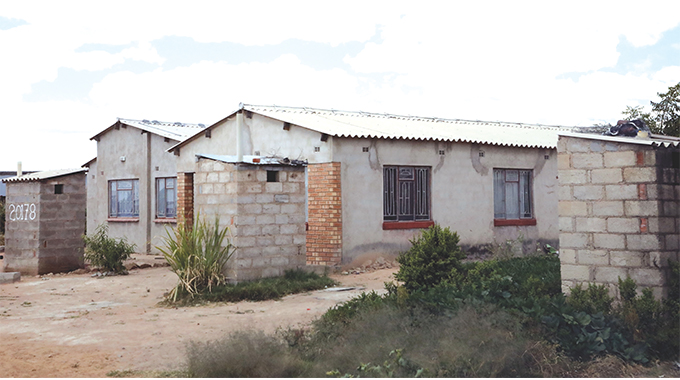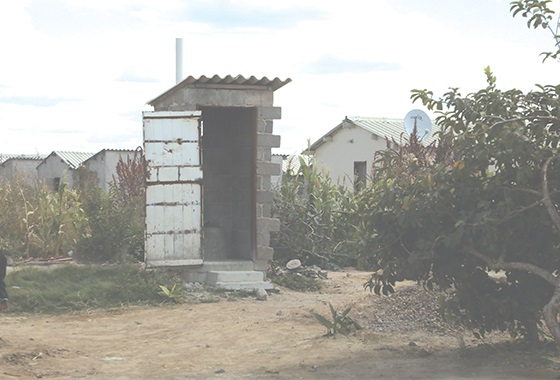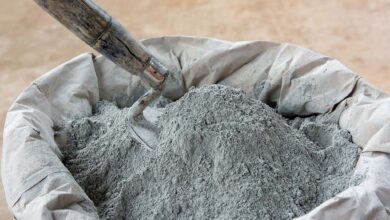Cowdray Park Blair toilet crisis: No solution 16 years on

To many, Blair toilets are a preserve of the rural folk, due to the absence of a proper sewer reticulation system. However, these toilets follow set parameters during construction so as to maintain health standards.
These standards include; distance from water bodies, the main house, between other toilets and the depth of the pit.
However, for thousands of households in Bulawayo’s Cowdray Park Hlalani Kuhle areas, Blair toilets have become their go-to lavatories for the past 16 years due to the numerous hurdles that have been faced in the construction of a sewer reticulation system.
These toilets do not even follow standards set by the World Health Organisation (WHO), most are located just outside the main gates of the houses and do not even follow the recommended depths so as not to contaminate water bodies.

According to WHO guidelines, blair toilets should be located downhill from a water source and should not penetrate groundwater.
“The toilet should not penetrate groundwater and should be at least two metres above the water table, the site should be well drained and above flood level. Latrines should also be established at a safe distance from the nearest water source. This is site-specific and should be determined for each water source on the basis of local hydrological conditions.
“A distance of 30 metres has been suggested, it is recommended that this figure is taken as a guide to establishing a minimum distance in the absence of local information. The Blair toilet should be a minimum distance of six metres from the house so that it is easy to reach but will also not cause problems of odour in the house,” read part of WHO guidelines.
First established with 200 built houses, with the rest of the stands being allocated as vacant plots, investigations have revealed that even the local authority, at one point was not aware of the number of households that were in the area as it was then under the Bulawayo Home Seekers Consortium Trust.
When the council took over the project in March 2012 and started working on it in April of the same year the housing project had no water, sewer or roads and there were no meters for individual households and the area did not have any form of service.
The Cowdray Park Hlalani Kuhle project now consists of over 13 000 residential stands, six primary school stands, four secondary school stands, two Local Authority sites, 15 places of Assembly and six commercial centres.
A neighbourhood commercial centre which is envisaged to be the biggest Commercial Centre in Cowdray Park is also located within this area.
Investigations have further revealed that despite the efforts done by the local authority in connecting the suburb to water and sewer reticulation, over 9 000 households still have no sewer reticulation and have been forced to resort to the blair toilet system.
Cowdray Park councillor, Kidwell Mujuru revealed that 9 600 households still have no sewer reticulation connected to their households, this meaning that they still relied on the Blair Toilet system.
“What happened is that segment five had sewer reticulation completed, while for segments three and six only half had sewer reticulation completed, this meaning the rest of the segments still have no sewer reticulation, amounting to about 9 600 households.
“It’s very bad, now that we are approaching the rainy season, some of the toilets actually flood resulting in the contents spilling onto the roads and the yards hence a clear health hazard,” said Mujuru.
BCC corporate communications manager, Nesisa Mpofu said one of the major drawback was that the Cowdray Park Hlalani Kuhle was a self-help scheme and the responsibility of reticulation rests on the residents themselves.
She said council policy is that all stands in the city should be serviced with a reticulated sewer network therefore the local authority was embarking on a number of efforts with a view to removing the pit latrines and all the associated challenges they pose.
“Under the African Development Bank funded Bulawayo Water and Sewerage Services Improvement Project programme, funds were availed for the installation of a 14km sewer outfall network that serviced the whole of Hlalani Kuhle housing project. This development has made it possible for the installation of general sewer reticulation for the whole project in totality thereby improving health standards of the general populace in the project area.
“The City of Bulawayo under the WaterWorx project has been doing internal sewer reticulation in the Hlalani Kuhle area mostly at Segments, 5, 3 and 6. The segments covered are minimal as the area is big. The City of Bulawayo notes that Cowdray Park Hlalani Kuhle is a self-help scheme and the responsibility of reticulation rests on the residents. The City continues to engage donor partners and government alike for funding in the reticulation and servicing of the area,” said Mpofu.
She revealed that after the local authority took over the project, they had engaged residents and they had set priority projects in terms of development, with water being the first, followed by sewer and finally roads and stormwater drainage.
“This was discussed and agreed upon at a residents’ meeting held soon after the Hlalani Kuhle areas were handed over to the City of Bulawayo in 2012. The proposal which was agreed upon was to ensure that the servicing be finalized in 5 years (2012 – 2017).
“The proposal and deadline were however dependent on the payment of US$50 per month by the residents which would translate to approximately US$500 000 per month needed towards servicing. The utilization of the contribution by beneficiaries has been trying to achieve the priority list set by the residents,” said the council spokesperson.
She however could not divulge information on the payment trends of the agreed figure, but investigations within the council’s monthly report revealed that the affected areas have lagged behind in the payment of the agreed figure such that the suburb now takes some of its funds from the government-instituted devolution funds.
Residents interviewed laid the blame on the local authority, saying there was no commitment on their part to resolve their situation.
“It is not like we want to be using these Blair Toilets but our situation forces us to do this because without them we would be forced to use the bushes; this is the only option we have for us to ensure health practices,” said one Lilian Mlotshwa who said she has been staying in the suburb for the past 10 years.
Sarah Muzenda, a resident in the area for the last six years said the rainy season was their worst period as the toilets would flood posing a health hazard, especially to children who play innocently on the roads.
“It is shocking that we have never had cholera or typhoid outbreak because of these toilets, we really pray that the authorities could visit us, especially during the rainy season and witness what we are going through,” said Muzenda.
Another resident, Lucky Ncube said their qualm with the local authority was on the amounts which they were being asked to pay, saying that it was in their own right to have such amenities constructed.
“Honestly, we no longer can say we stay in the country’s second-largest city when we still use Blair toilets, such things as sewer reticulation are rights, not privileges especially when we stay in such a big city, someone, somewhere is failing,” said Ncube.





